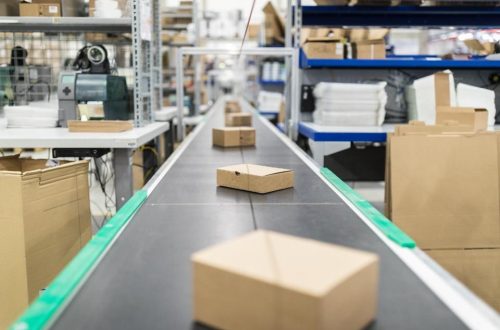
Employ These Four Tactics To Unlock The Future Of Commerce
There’s no debate that Amazon’s success has reshaped the online retail industry. Others must now compete on pricing, delivery times and other attractive offerings like recurring subscription purchases. Those that can’t deliver similar experiences are finding out just how quickly consumers will move on to another seller.
The shift toward convenient, personalized and technology-enabled shopping is catalyzed by what’s become known as the Amazon effect — the continuous innovation of commerce in an effort to meet the demands of today’s consumer who is always one click away from another offer or deal.
Competing with Amazon is a difficult task. We have seen many prominent retailers fade out of sight because they were unable to merge their brick-and-mortar and online experiences or otherwise evolve their strategies to win over digital consumers. To combat the Amazon effect and unlock the future of commerce, today’s retailer should embrace digital, rethink physical, factor in supply chain and be mindful of evolving financial models.
[Full disclosure: The following retailers are tangentially involved with Ingram Micro.]
Embrace digital.
We are in the Information Age. Digital technology in the form of content, social feedback and product reviews is omnipresent in industries from healthcare to automotive to grocery. The transaction process is digitizing before our eyes and digital solutions for compliance, regulatory and logistical problems will soon be standard, too. However, retailers must attempt to leverage digital technologies that go beyond what current marketing technology stacks and RFID readers do.
The supermarket chain Kroger tested smart shelf technology, which incorporates digital price tags along store shelves to provide shoppers with more product information. Having automated pricing displays frees up store attendants from administrative tasks to spend more time interacting with customers. Target has experimented with LED lights that send signals to shoppers’ smartphones to alert them about deals and items on their shopping lists. The need for retailers to embrace digital is obvious — it’s how innovative and effective their strategies face fierce competition that will determine their success.
Rethink physical.
Physical stores and tangible products are not dead (and some will argue that they’re actually a secret weapon for retailers competing with Amazon). Brick-and-mortar storefronts can be leveraged to offer services like in-store pickup, returns and free pickup of oversize items. Walmart, Best Buy and Loblaw (a Canadian grocery retailer) are great examples of companies radically rethinking their physical assets to increase the leverage of their e-commerce businesses.
Walmart is currently testing fully automated stores and allowing consumers to shop via text message. Loblaw, the parent company to Real Canadian Superstore Shoppers Drug Mart & Joe Fresh, has aggressively opened “Click & Collect” services in 200 stores nationwide in Canada. Brick-and-mortar stores aren’t going away — retailers must instead use their physical locations to offer unique experiences and shopping capabilities that consumers can’t get online alone.
Make your supply chain work.
Shoppers expect convenience and immediate gratification. They don’t care if you just had a sale or whether something will be restocked next week. If you can’t supply what they want when they want it, they’ll order it somewhere else. One way to ensure a working supply chain is to differentiate. Having multiple distribution facilities, sourcing from a variety of suppliers and holding more inventory than you think you might need can help in the event of a catastrophe or mistake. Retailers must also take cues from software companies and work to become lean. Building an agile, data-centric supply chain management strategy can improve the accuracy of your forecasting, inventory management and delivery, among other organizational facets.
Accenture’s Retail Supply Chain Reboot research found that “Retailers are making big investments in supply chain innovations, but often lack a way to make sense of their future store-level logistical needs.” Effectively addressing these needs will be the mark of a successful supply chain.
The report indicates that investing in technology in hopes that new tools become a supply-chain panacea is a losing proposition. Instead, retailers must look at the full picture and invest in people, data, analytics and their ecosystem. Efficient supply chains combine all of these factors and build a holistic approach to delivering goods quickly to consumers.
Don’t try to fit into old financial models.
Shipping and logistics costs will rise. Digitization will require new talent. Inventory should not be carried solely on your balance sheet but should be shared across partners. R&D may be a required line item in new retail profit and loss statements (P&L). Older financial models won’t be able to manage these new necessities — keep an open mind.
To put it in perspective, a recent publication claimed that the transportation sector of logistics (the cost of shipping vs. other logistics costs like handling) has experienced a 7% growth rate each year from 2011 to 2016. This statistic aligns with the growth of the e-commerce industry and shows that as revenue from digital channels increases, so too does the overall cost of logistics to the business.
The future of commerce is now.
We may be discussing the future of commerce, but the truth is that many of these changes have been happening for a while now. And yet — many retailers have not altered their approaches to best leverage this new paradigm. Those that have not evolved to meet the demands of these shifts have lost out on market share or have been forced to scale back considerably. Commerce has changed and continues to change, and retailers that do not fortify their offerings and operations stand to fall behind or be moved out of the market altogether.
This article first appeared on forbes.com on March 9, 2018





